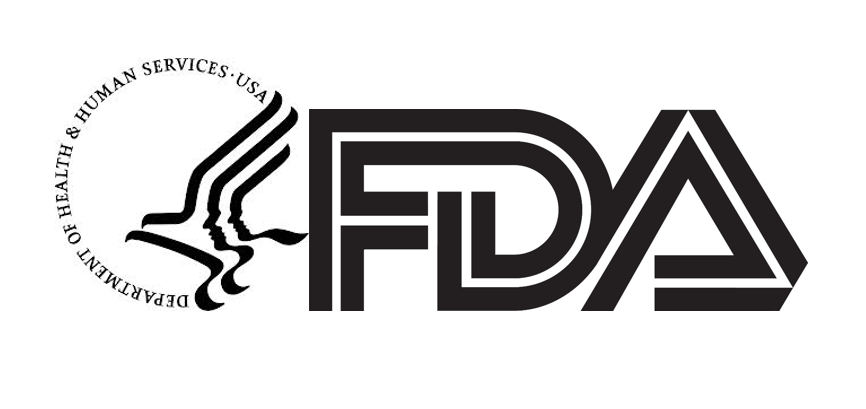Fluoxymesterone, often known by its brand name Halotestin, is a potent synthetic androgen that has been used in the medical field for a multitude of therapeutic applications. Developed in the 1950s, fluoxymesterone is characterized by its strong androgenic properties and relatively minimal anabolic effects. This steroid hormone has a significant impact on protein metabolism, promoting protein synthesis and offering a significant increase in strength without a corresponding increase in body weight.
In the clinical setting, fluoxymesterone has been employed for its efficacy in treating conditions like male hypogonadism, delayed puberty in boys, and in certain breast cancer cases in women. Its use extends to countering muscle wasting diseases and helping to mitigate the effects of prolonged exposure to corticosteroid treatment. Administered orally, the dosage and administration of fluoxymesterone require careful consideration to balance therapeutic benefits with potential side effects.
Side effects associated with fluoxymesterone are consistent with those observed with other potent androgens, which can range from alterations in blood lipids to liver toxicity, and may include other gender-specific adverse reactions. Regulatory bodies have classified this drug under controlled substances due to its potential for abuse and serious health risks when used inappropriately. The mechanism of action for fluoxymesterone, like other androgens, involves modulating gene expression pathways to exert its effects on target tissues. Understanding its interactions, contraindications, and care during administration is crucial for healthcare providers when prescribing this medication.
Quick Summary
- Fluoxymesterone, known as Halotestin, is used therapeutically for various medical conditions.
- It requires careful dosage management due to its potent androgenic nature.
- Monitoring for side effects and potential drug interactions is critical for patient safety.
Chemical and Physical Properties

Fluoxymesterone, commonly known by its brand name Halotestin, is a synthetic anabolic androgenic steroid. It is primarily available in tablet form and exhibits potent pharmacological activities which influence its pharmacokinetics, including absorption, distribution, metabolism, and excretion.
Pharmacology
Fluoxymesterone exhibits strong anabolic and androgenic properties. It binds to androgen receptors in target tissues to exert its effects, promoting increases in nitrogen retention, and protein synthesis which are essential for muscle growth and strength gains. Fluoxymesterone is characterized by its ability to provide a rapid gain in strength, with relatively less impact on body weight, which makes it particularly favored in sports that require high power output in categories with strict weight classes.
Pharmacokinetics
- Absorption: The bioavailability of Fluoxymesterone after oral administration is relatively high due to its structural characteristics that resist liver metabolism.
- Distribution: Once absorbed, it exhibits a strong binding affinity to plasma proteins such as sex hormone-binding globulin (SHBG) and albumin.
- Metabolism: Fluoxymesterone undergoes hepatic metabolism. Due to its 17-alpha alkylated structure, it is more resistant to liver breakdown than other anabolic steroids.
- Half-Life: The drug has a relatively short half-life, which requires multiple daily dosages to maintain stable blood levels.
- Excretion: Excretion mainly occurs through the urine, and to a lesser extent, faeces.
The pharmacokinetics of Fluoxymesterone, including its half-life and excretion, play a crucial role in determining its dosage schedule and potential for side effects.
References
- National Center for Biotechnology Information (2023). PubChem Compound Summary for CID 5281034, Fluoxymesterone. Retrieved February 6, 2024, from https://pubchem.ncbi.nlm.nih.gov/compound/Fluoxymesterone
- DrugBank Online (2023). Fluoxymesterone. Retrieved February 6, 2024, from https://www.drugbank.ca/drugs/DB01185
Therapeutic Uses

Fluoxymesterone, also known as Halotestin, has specific therapeutic uses in both males and females. This potent synthetic testosterone derivative is particularly effective in certain medical conditions which will be discussed in the subsections below.
Hypogonadism in Males
In males, hypogonadism, a condition where the gonads produce insufficient testosterone, is a primary indication for Fluoxymesterone therapy. Its use helps in supplementing testosterone levels, thereby improving symptoms such as low libido, decreased muscle mass, and energy levels.
Breast Cancer in Women
For women, Fluoxymesterone has been utilized in the treatment of breast cancer, particularly in cases where the disease is hormone-sensitive. It can be prescribed to postmenopausal women when other treatment options are not suitable, working to stall the progression of the tumor.
Delayed Puberty
When it comes to delayed puberty in boys, Fluoxymesterone aids in triggering the development of secondary sexual characteristics. Its administration can lead to developments such as increased muscle mass, deepening of the voice, and growth of body hair, which are often delayed in this condition.
Dosage and Administration

Proper dosage and administration are crucial for the effectiveness and safety of Fluoxymesterone (Halotestin) treatment.
Dosage Guidelines
Fluoxymesterone is an anabolic androgenic steroid available in tablet form. Dosage varies based on the condition being treated, patient response, and the presence of any adverse effects. For adult males undergoing replacement therapy for androgen deficiency, the typical dosage is 5 to 20 mg per day. When used for delayed puberty in males, the dose is often lower, around 2.5 to 20 mg per day, not to exceed 4 to 6 weeks of treatment.
Administration Methods
Fluoxymesterone tablets should be taken orally. They are generally administered with water, and they can be taken with or without food. It is important to follow the administration schedule prescribed by a healthcare provider to maintain consistent blood levels of the drug.
References
Side Effects and Adverse Reactions

The administration of Fluoxymesterone (Halotestin) comes with a range of side effects, from common, less serious issues to serious adverse reactions that may require medical attention. It is imperative for individuals to be aware of these potential risks when considering the use of this drug.
Common Side Effects
List of Common Side Effects:
- Acne
- Edema
- Hirsutism
- Gynecomastia
- Nausea
- Headache
These side effects are regularly encountered and are not usually life-threatening but may cause discomfort. Acne and hirsutism occur due to androgenic effects of the drug. Edema is associated with sodium retention, and gynecomastia may present due to the hormonal imbalances caused by the medication. Nausea and headaches are also reported, but their link to the medication’s action is less direct.
Serious Adverse Reactions
Table of Serious Adverse Reactions and Related Concerns:
| Serious Reaction | Related Concerns |
|---|---|
| Priapism | Painful, prolonged erection, potentially causing permanent damage |
| Virilization | Development of male characteristics in women |
| Liver Function | Hepatotoxicity that can lead to serious liver damage |
| Psychological | Anxiety and depression as potential neurological effects |
Serious adverse reactions necessitate immediate medical intervention. Priapism, for example, is a urologic emergency that can cause permanent damage if not treated promptly. Virilization is of particular concern for female users. Hepatotoxicity is a critical risk factor, given the potential for liver damage with the use of Fluoxymesterone, which requires monitoring liver function during use. Psychological effects such as anxiety and depression have also been observed, though the precise mechanisms are less clearly understood.
Contraindications and Precautions

Fluoxymesterone (Halotestin) is a potent androgenic steroid indicated for the treatment of males with deficiencies in endogenous testosterone. It has specific contraindications and precautions that must be adhered to in order to avoid serious health risks.
Cancer-Related Contraindications
Patients with known or suspected carcinomas of the breast, particularly those who are or may become pregnant, should not use fluoxymesterone due to the potential for hormonal exacerbation of cancer. Additionally, males with carcinoma of the prostate or breast are contraindicated from using this medication due to the risk of accelerating the growth of these cancers.
Other Health Contraindications
Fluoxymesterone is contraindicated in individuals with a history of hypersensitivity to the drug or any of its excipients. There is also a high risk of complications in patients suffering from severe cardiac, hepatic, or renal disease. Complications of hypercalcemia are a concern for patients immobilized by severe illness. Furthermore, individuals with conditions such as benign prostatic hypertrophy may experience exacerbation of symptoms.
Use in Specific Populations
- Pediatric: The use of fluoxymesterone in pediatric patients should be approached with caution due to the potential for adverse effects on bone maturation.
- Pregnancy: Fluoxymesterone falls under Pregnancy Category X, indicating it should never be used during pregnancy as it can cause fetal harm when administered to a pregnant woman.
- Contraception: Women of childbearing potential require effective contraceptive measures while taking fluoxymesterone, to prevent pregnancy.
In all instances, medical professionals must ensure patients are fully informed of these contraindications and precautions to prevent adverse effects from fluoxymesterone treatment.
References
Drug Interactions

Fluoxymesterone’s pharmacological effects can be significantly altered through interactions with other drugs, and it can also influence the efficacy and toxicity of other medications. It is critical for healthcare providers to be aware of these interactions to avoid potential adverse effects.
Impact on Other Drugs
Fluoxymesterone may enhance the anticoagulant effect of blood thinners like warfarin. Patients taking both medications should have their blood clotting times, or INR, closely monitored, and warfarin doses may need adjustment to prevent bleeding complications.
Substances Affecting Fluoxymesterone
Enzyme inducers like barbiturates, phenytoin, and rifampicin can increase the metabolism of fluoxymesterone, reducing its effectiveness. Conversely, enzyme inhibitors like ketoconazole can decrease fluoxymesterone’s metabolism and increase the risk of toxicity. Close monitoring and possible dose adjustments of fluoxymesterone are necessary when initiating or discontinuing these substances.
References
Mechanism of Action

Fluoxymesterone, known by its brand name Halotestin, is a synthetic androgen. It is designed to mimic the effects of testosterone, the primary male sex hormone. Fluoxymesterone facilitates the development and maintenance of male sex characteristics by binding to androgen receptors within the target tissues. These characteristics include male sex organs and secondary sex characteristics, such as increased muscle mass and body hair.
The compound’s interaction with androgen receptors plays a pivotal role in protein anabolism, which refers to the building of proteins in cells. This anabolic effect supports muscle growth and strength, making Halotestin attractive for clinical scenarios that require improved protein synthesis and nitrogen balance. Additionally, it reduces protein catabolism, which is the breakdown of proteins, further promoting a state where muscle preservation is enhanced.
Fluoxymesterone’s impact extends to the influence on nitrogen balance in the body. By promoting positive nitrogen balance, Halotestin ensures that nitrogen, a key element of amino acids, is retained in the body, which is indicative of greater anabolic activity.
In terms of clinical pharmacology, this drug can stimulate the production of red blood cells, offering potential therapeutic benefits in the treatment of anemias. However, it may suppress natural testosterone release by inhibiting the pituitary luteinizing hormone (LH) and pituitary follicle stimulating hormone (FSH), which regulate the natural production of testosterone in males.
To summarize, Fluoxymesterone’s mechanism of action is primarily through its role as an androgen receptor agonist, facilitating the development and maintenance of male sex characteristics and promoting an anabolic environment supportive of muscle growth and protein retention.
Regulatory Information

Fluoxymesterone, commonly known as Halotestin, is subject to stringent regulatory controls due to its classification as a controlled substance with potential for abuse and dependence.
Controlled Substance Classification
Fluoxymesterone is classified under Schedule III of the Controlled Substances Act in the United States. This categorization is applied to substances that have a recognized medical use but may lead to moderate or low physical dependence or high psychological dependence. The Drug Enforcement Administration (DEA) oversees the regulation of Schedule III substances to prevent drug abuse while ensuring availability for legitimate medical purposes.
- Classification: Schedule III
- Risk for Abuse: Moderate to low physical dependence, high psychological dependence
- Regulatory Body: Drug Enforcement Administration (DEA)
Prescription and Supply
The supply of Fluoxymesterone requires a prescription from a licensed healthcare provider. Pharmacies and medical practitioners dispensing this hormone must adhere to DEA regulations to track prescriptions and prevent diversion for non-medical use.
- Prescription Requirement: Yes
- Supply Regulation: DEA guidelines for tracking and responsible dispensing
- Usage: Verified medical indications only
Fluoxymesterone is not categorized as a dietary supplement; it is a synthetic hormone indicated for certain medical conditions and can only be obtained and used under medical supervision.
References
- DEA Classification of Controlled Substances: https://www.deadiversion.usdoj.gov/schedules/
Frequently Asked Questions

Fluoxymesterone, commonly known as Halotestin, is an anabolic steroid with potent androgenic properties. This section addresses common inquiries related to its use, effects, and guidelines within bodybuilding.
What are the common benefits of using Fluoxymesterone in bodybuilding?
Fluoxymesterone is often used by bodybuilders to increase strength and aggression without significant weight gain, due to its minimal impact on body mass. It is appreciated for its ability to improve muscle hardness and density ahead of competitions.
Can you outline the potential side effects associated with Fluoxymesterone?
Individuals taking Fluoxymesterone may experience side effects such as liver toxicity, changes in cholesterol levels, increased risk of cardiovascular disease, and androgenic effects like acne, hair loss, and virilization in women.
How does Fluoxymesterone impact the body upon consumption?
Upon consumption, Fluoxymesterone acts as a powerful androgen, stimulating protein synthesis and erythropoiesis. It also affects the balance of sex hormones, which can boost strength and muscle density while also having profound effects on secondary sexual characteristics.
What is the recommended dosage range for Fluoxymesterone?
The dosage range for Fluoxymesterone varies, but it typically ranges from 10–40 mg per day. Dosages depend on individual responses and objectives, and it is crucial to consult a healthcare provider to determine the proper amount for safe use.
What should someone expect in terms of changes before and after starting Fluoxymesterone?
Before starting Fluoxymesterone, one should expect no sudden physical changes. After beginning its use, users might notice increased strength and aggression, denser muscle mass, and possibly a more vascular appearance. Careful monitoring is important to manage any side effects.
Under what brand name is Fluoxymesterone most commonly known?
Fluoxymesterone is most commonly known under the brand name Halotestin. It is also marketed under other names, but Halotestin is the most recognized brand in the bodybuilding community.
Dr. Grant Fourie, a specialist in male hormones, is based in Cape Town, South Africa. He provides comprehensive treatments for conditions related to low testosterone, such as erectile dysfunction, fatigue, and mood changes. His methods include hormone replacement therapy and other modern treatment options.
Contact me via email or phone to book personal appointment in my clinic: The Village Square, Cape Town - South Africa



